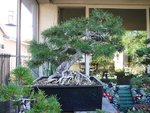sorce
Nonsense Rascal
It depends on how much those branches are interfering/going to interfere with your design.
If not too much design interference too soon, report first, allow a recovery, then chop.
If soon cut now, and wait to repot.
The one I had go big needle from a major whack is going on year 3 post whack, and I'm just getting comfortable thinking about Repotting.
With your climate possibly weakening the tree, adjust accordingly.
Sorce
If not too much design interference too soon, report first, allow a recovery, then chop.
If soon cut now, and wait to repot.
The one I had go big needle from a major whack is going on year 3 post whack, and I'm just getting comfortable thinking about Repotting.
With your climate possibly weakening the tree, adjust accordingly.
Sorce



